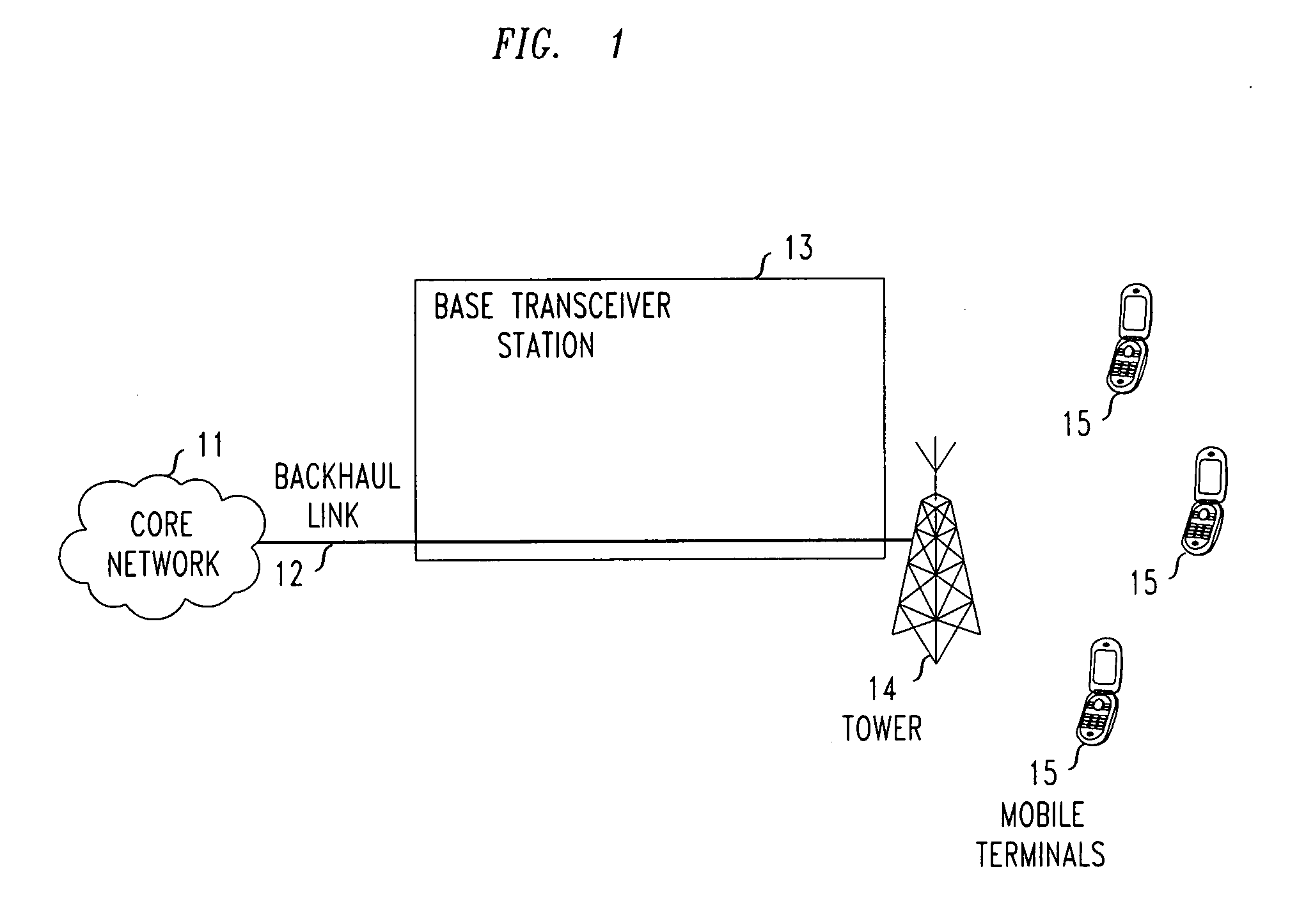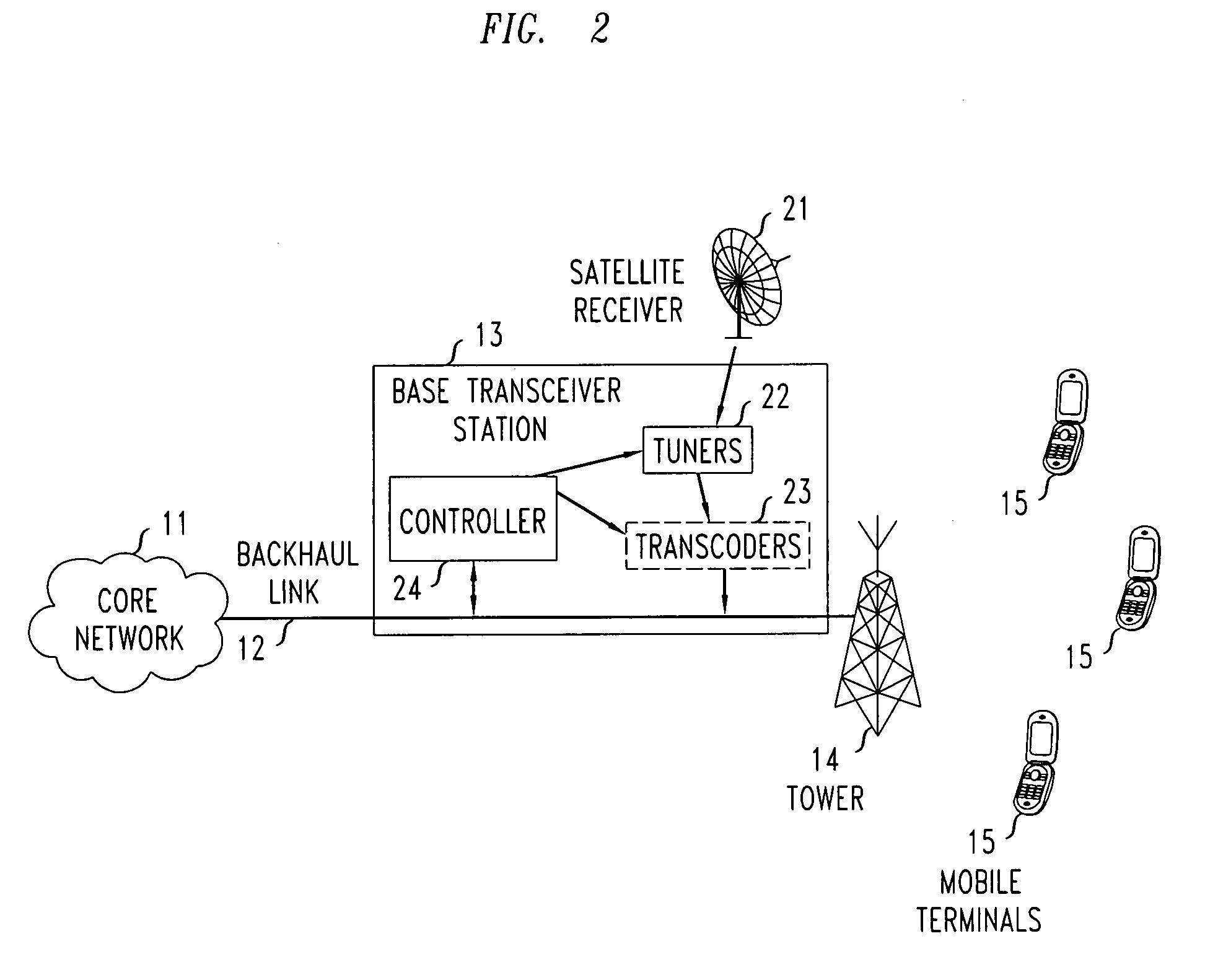Method and apparatus for providing local multimedia content at a mobile wireless base station using a satellite receiver
a mobile wireless and satellite receiver technology, applied in the direction of electrical apparatus, selective content distribution, television systems, etc., can solve the problems of prohibitively large, slow deployment of fiber optic cables, and high cost of fiber optic cables
- Summary
- Abstract
- Description
- Claims
- Application Information
AI Technical Summary
Benefits of technology
Problems solved by technology
Method used
Image
Examples
Embodiment Construction
[0010]FIG. 1 shows a prior art mobile communications network having a conventional Base Transceiver Station (BTS) which receives video signals from a Core Network via a Backhaul Link. The mobile communications network of FIG. 1 comprises a core network 11 connected to a Base Transceiver Station (BTS) 13 with use of backhaul link 12 (which is part of a conventional backhaul network). The BTS is also connected to tower 14 which is used by the BTS to communicate over an air interface with a plurality of mobile terminals 15. All of these components are conventional and will be fully familiar to those of ordinary skill in the art.
[0011]In the prior art network of FIG. 1, when video services are to be provided to one or more of mobile terminals 15, the required video content is received by BTS 13 from core network 11 via backhaul link 12. As pointed out above, due to the substantial amount of bandwidth typically required for video services, together with the limited capacity of typical ba...
PUM
 Login to View More
Login to View More Abstract
Description
Claims
Application Information
 Login to View More
Login to View More - R&D
- Intellectual Property
- Life Sciences
- Materials
- Tech Scout
- Unparalleled Data Quality
- Higher Quality Content
- 60% Fewer Hallucinations
Browse by: Latest US Patents, China's latest patents, Technical Efficacy Thesaurus, Application Domain, Technology Topic, Popular Technical Reports.
© 2025 PatSnap. All rights reserved.Legal|Privacy policy|Modern Slavery Act Transparency Statement|Sitemap|About US| Contact US: help@patsnap.com



